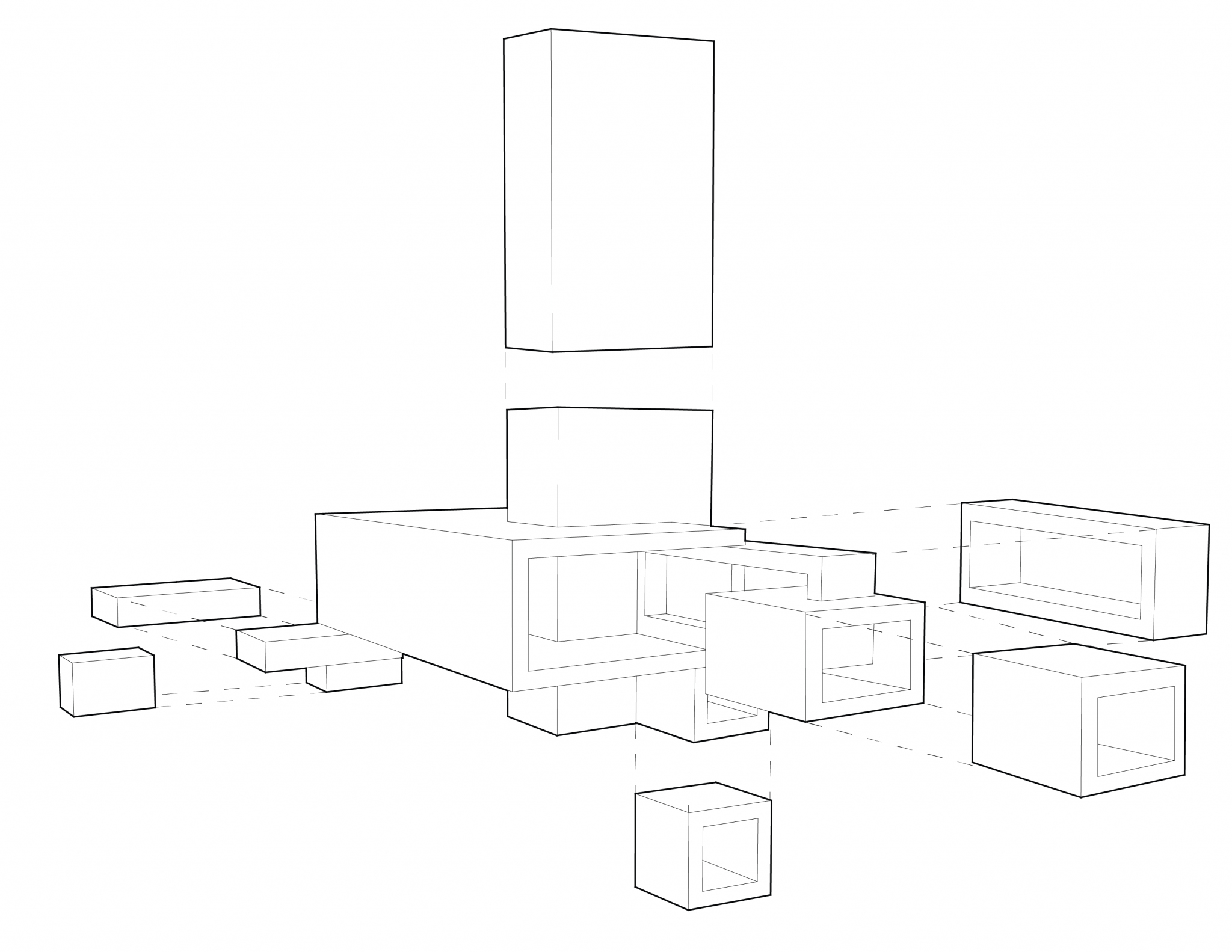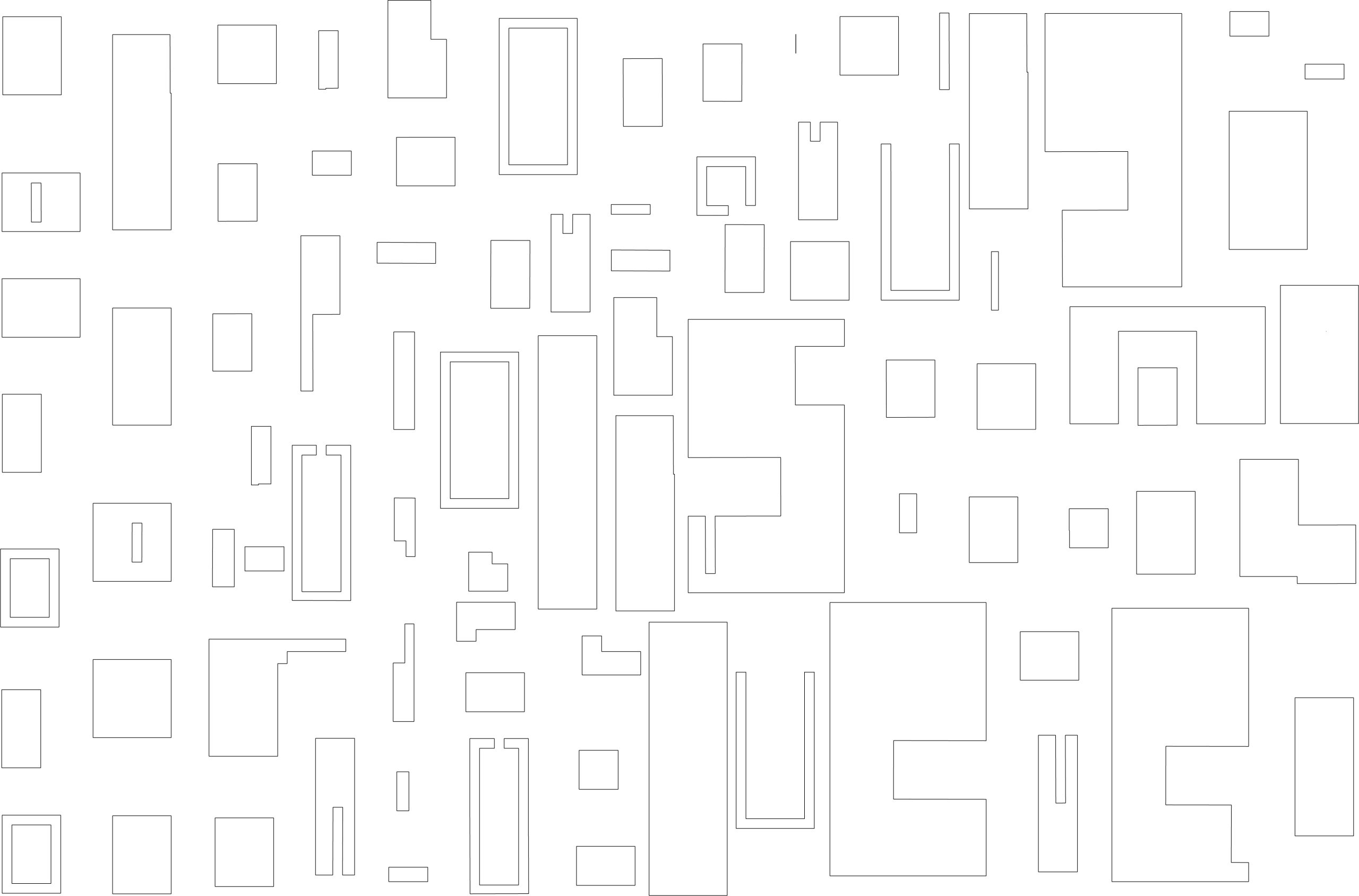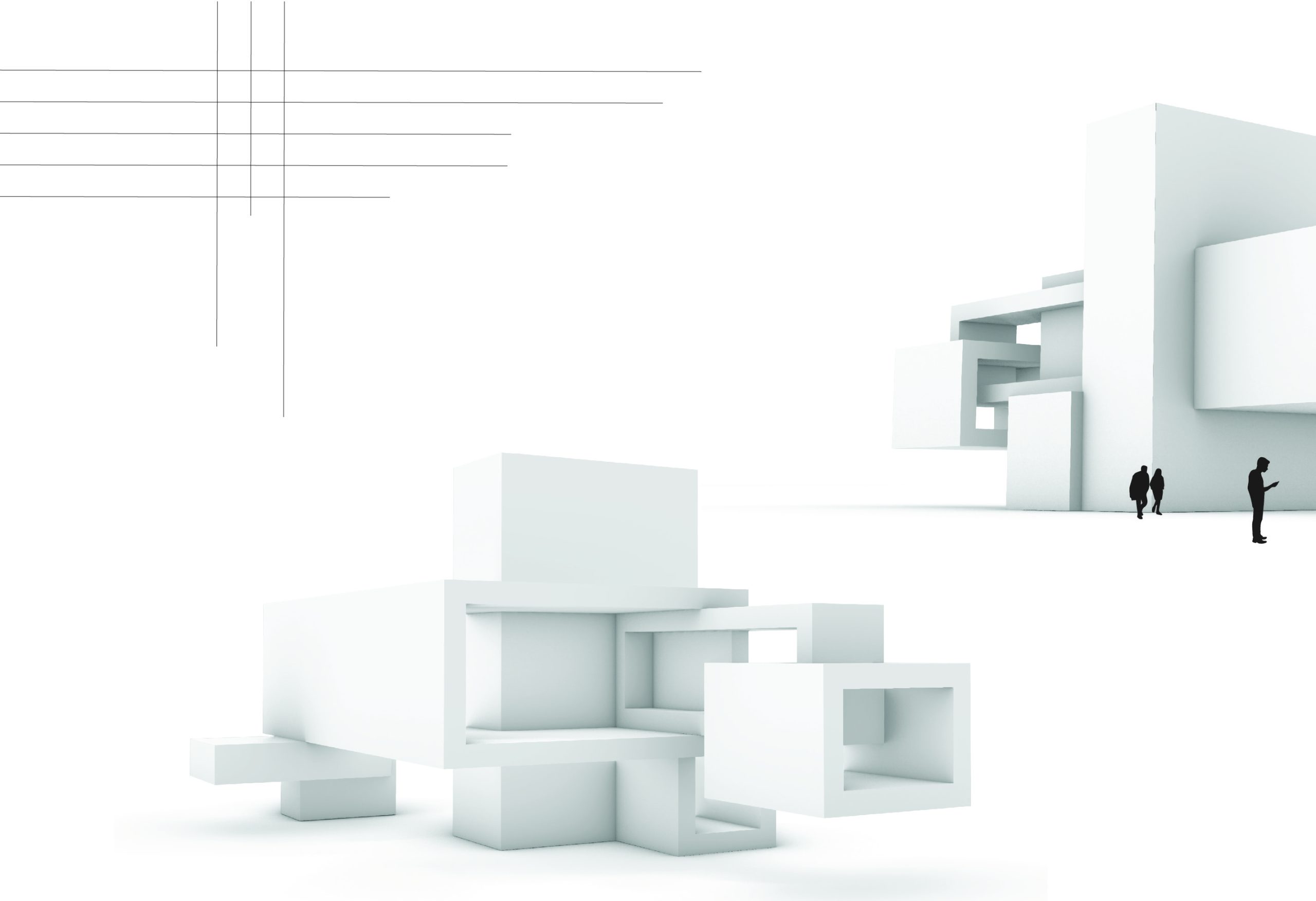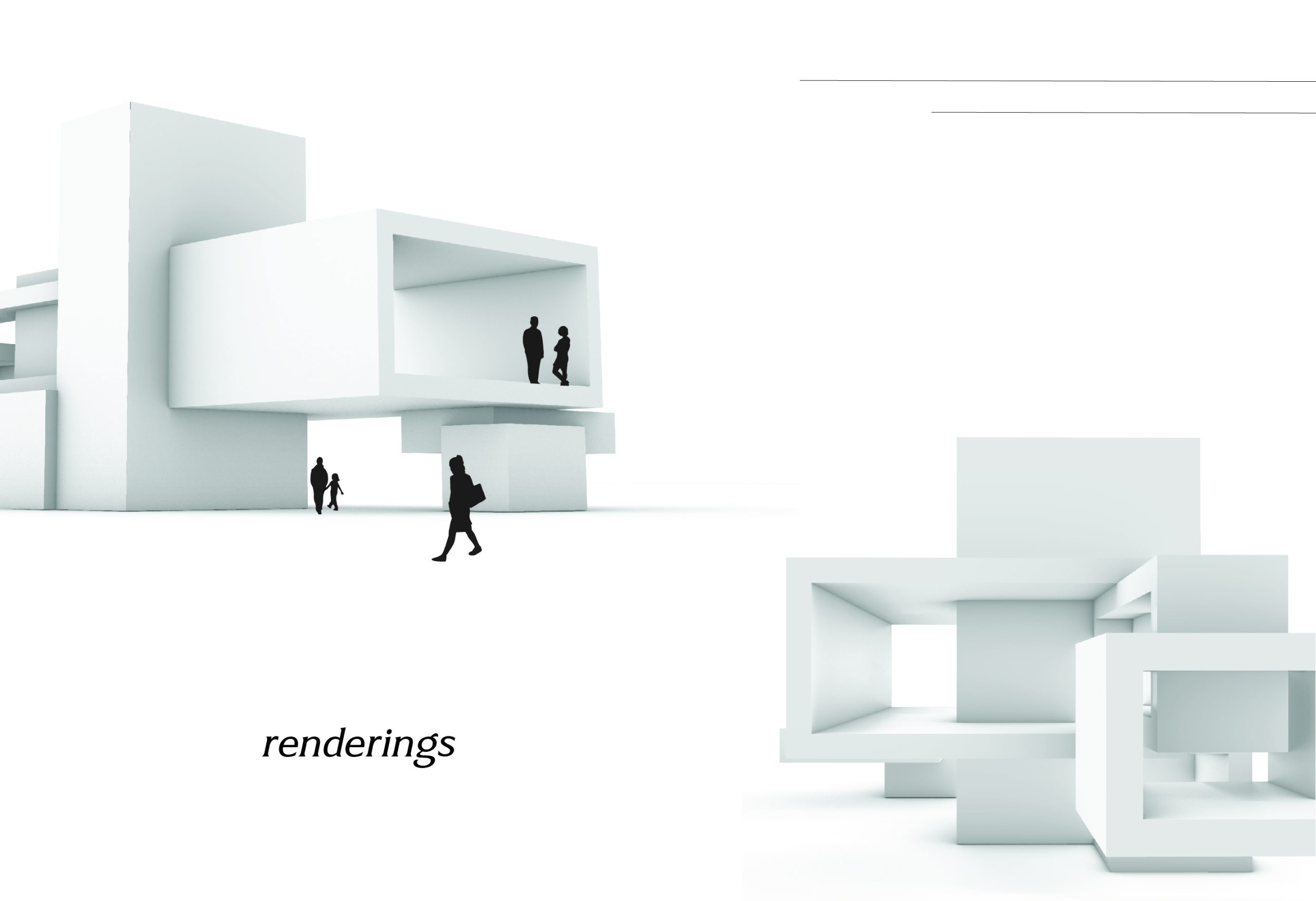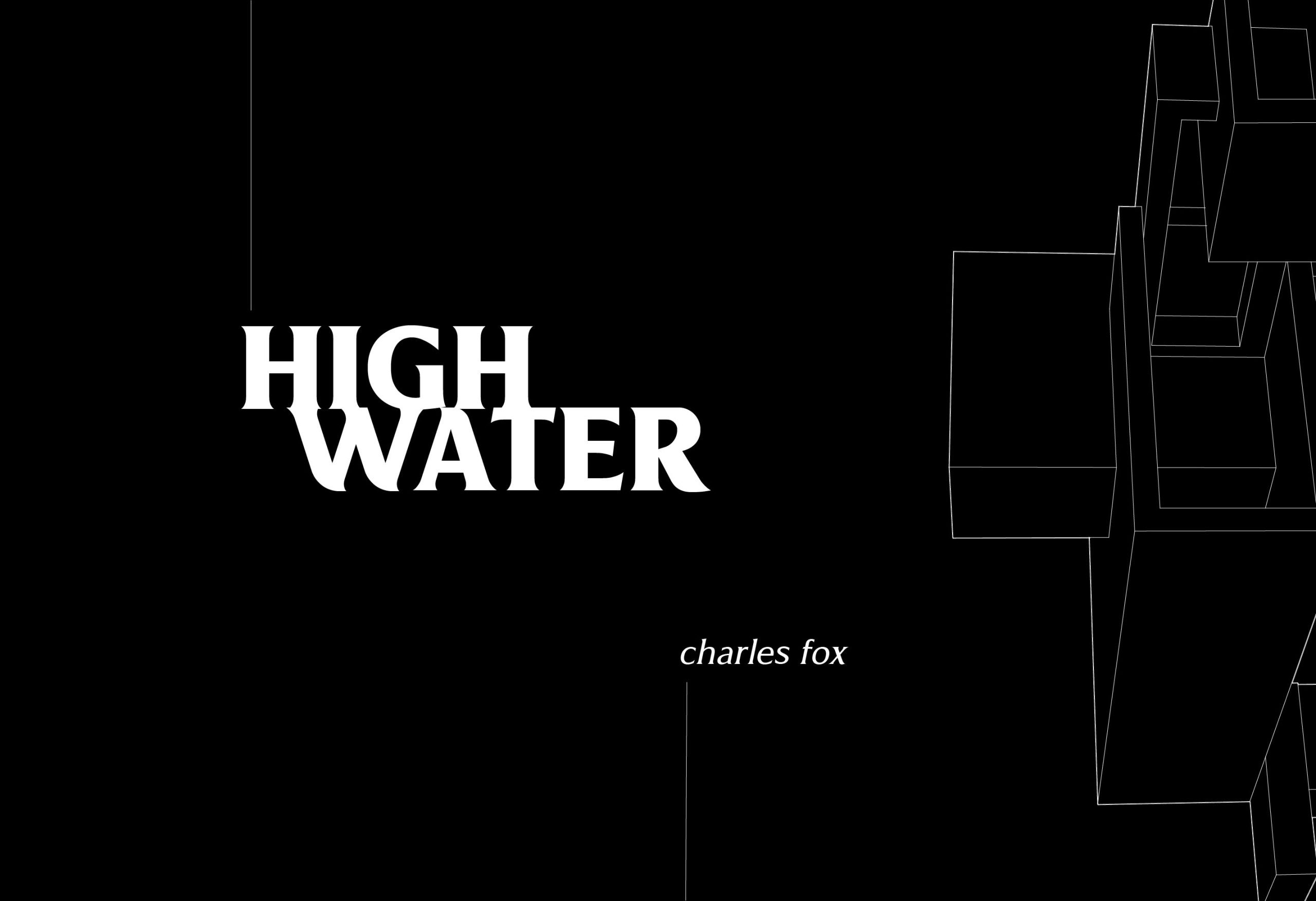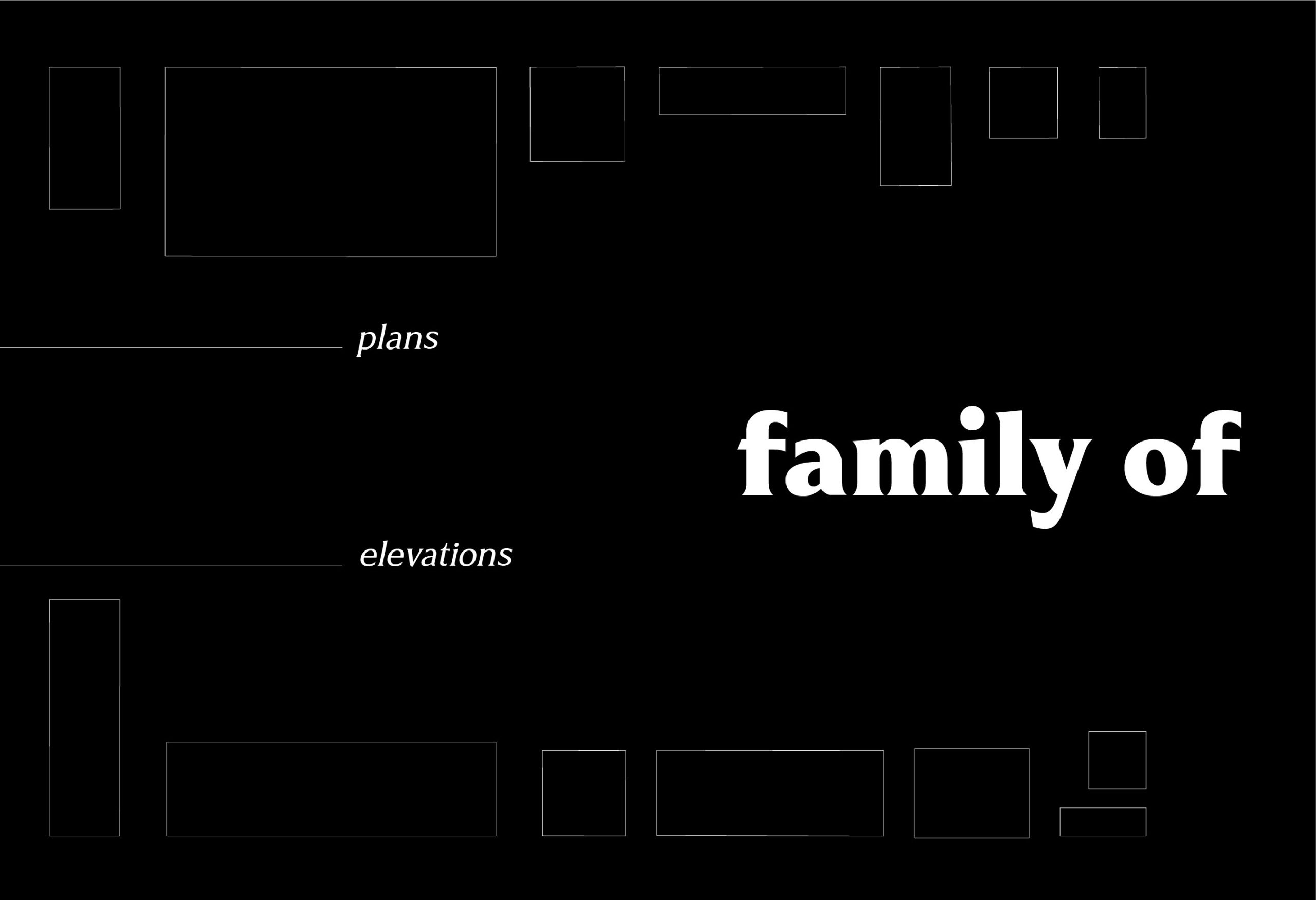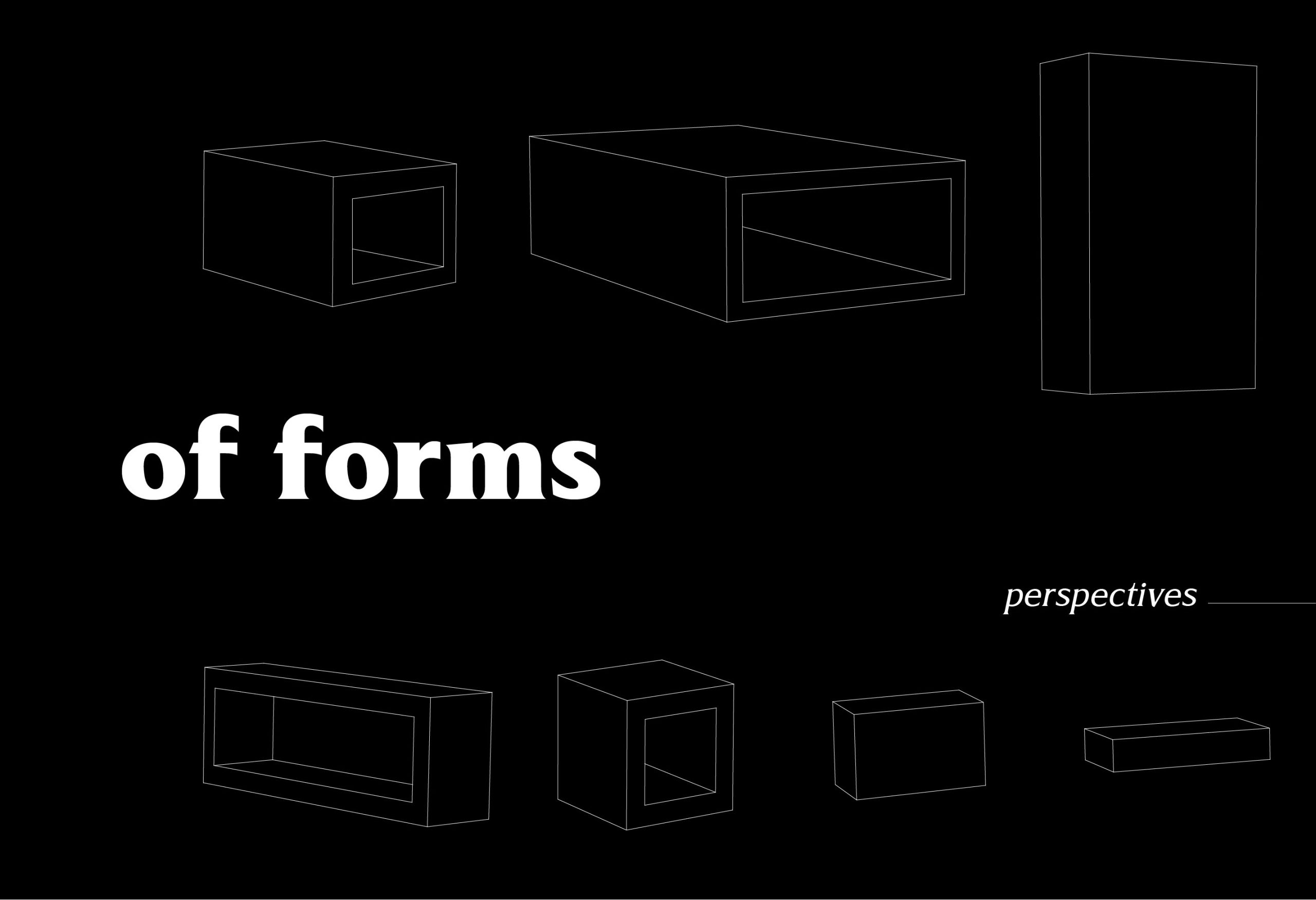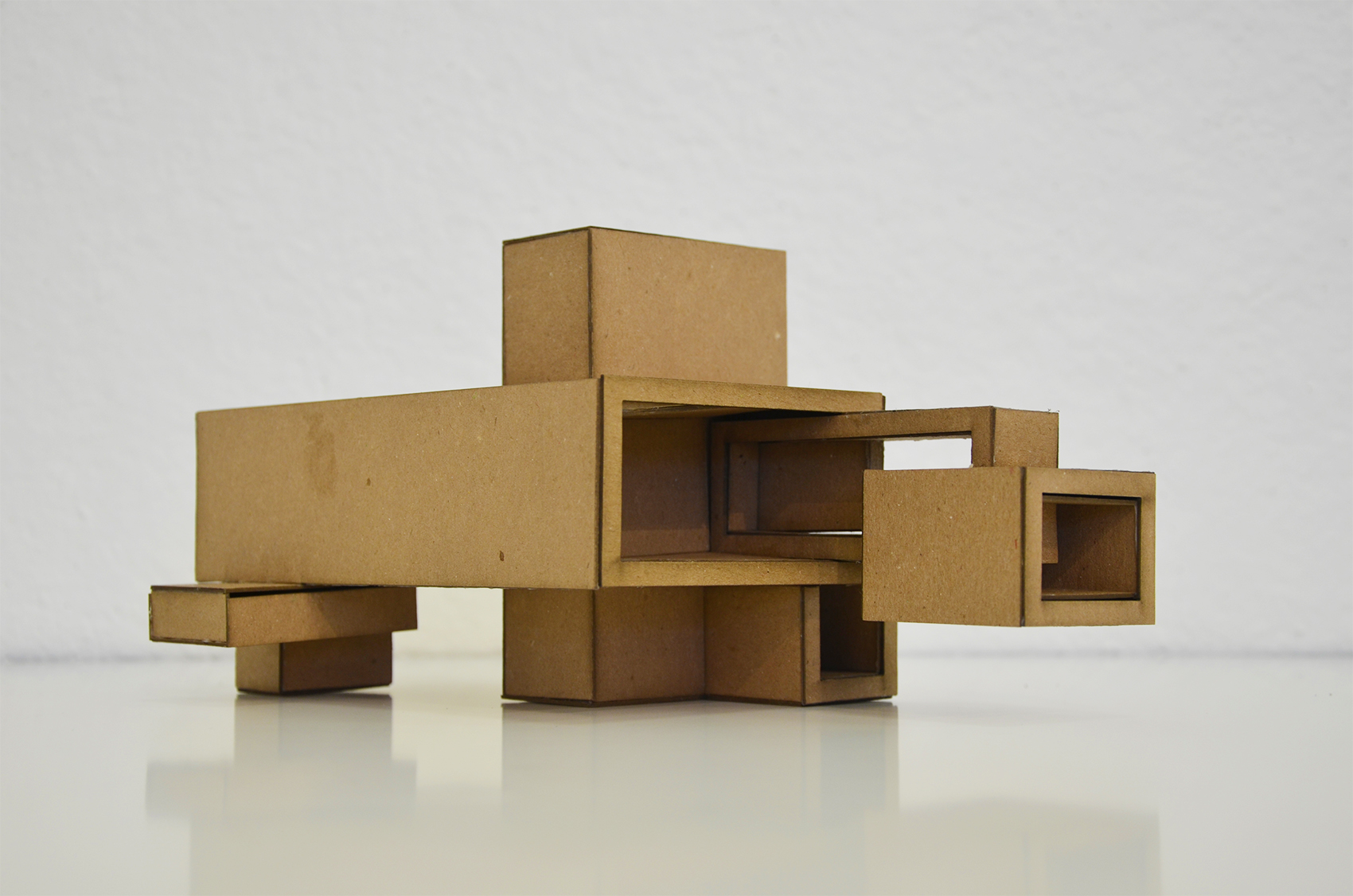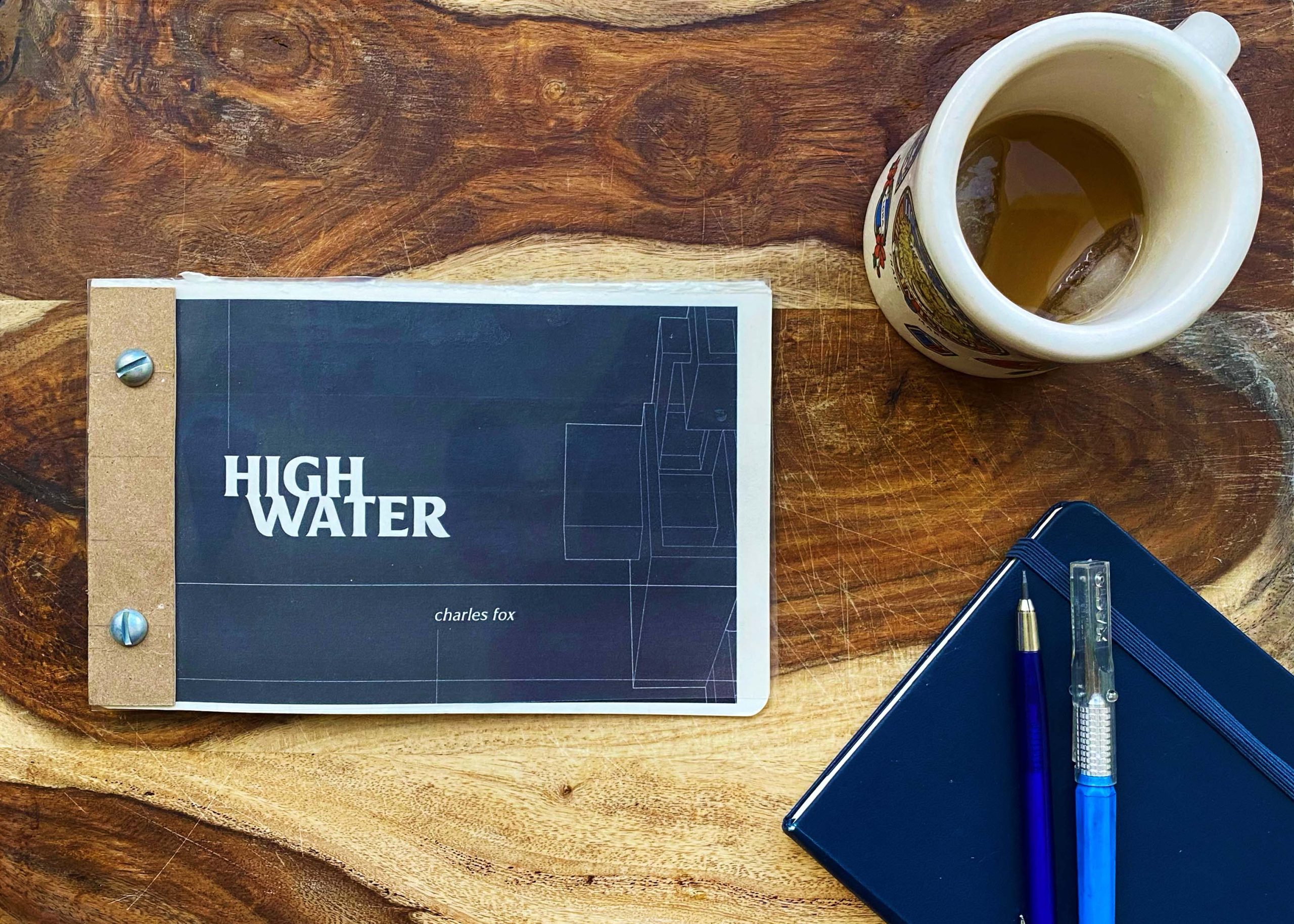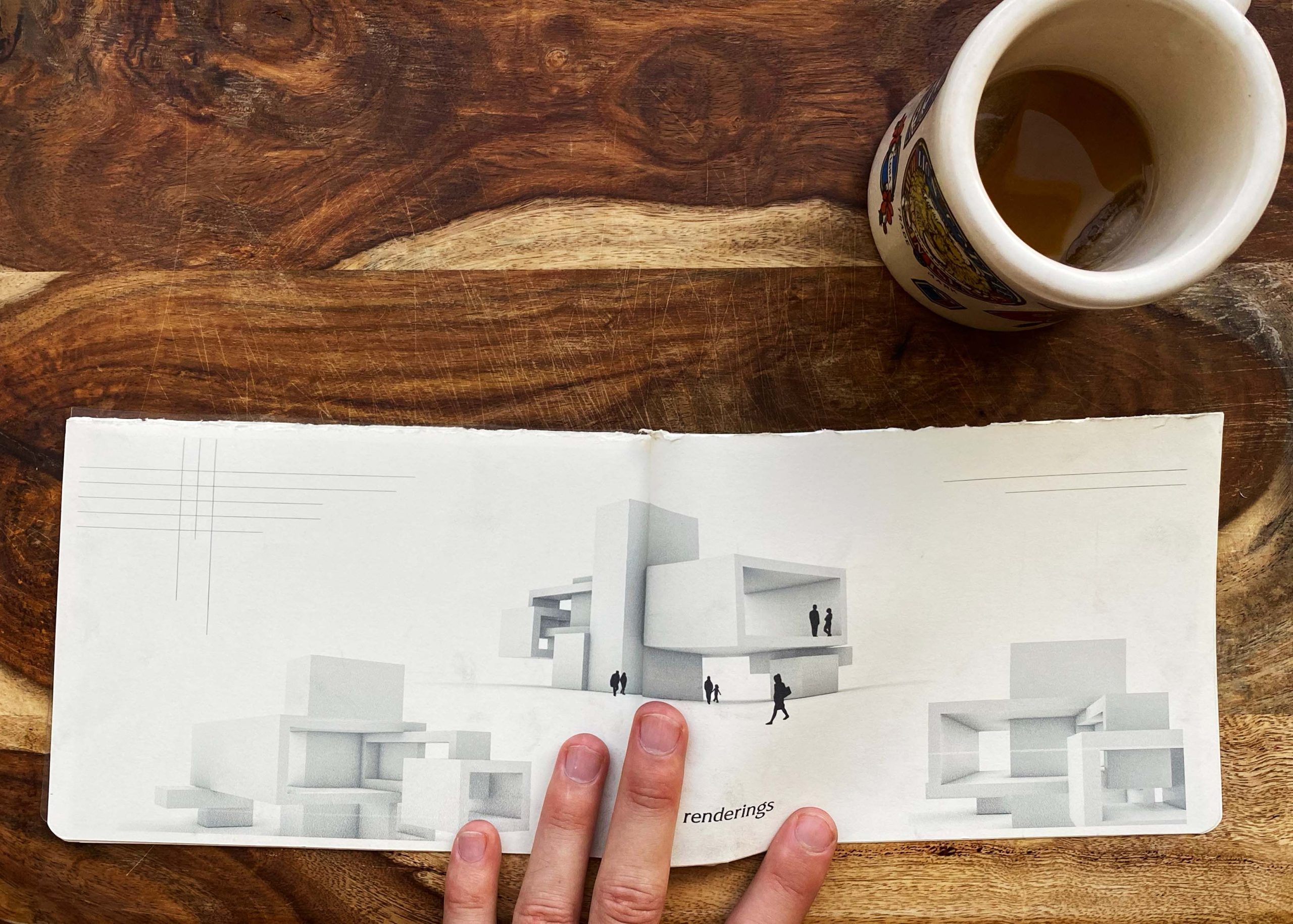High Water
High Water was the culmination of a course-long project in my Design Workshop class where the components of the assignment were given to us in successive steps after the previous component was completed. The goal of the project was to use technical skills and constant reiteration to solve an issue or construct a narrative through built environments.
Our first assignment was to draw a taxonomy of forms. I created a series of rectilinear shapes that reminded me of pixels and Tetris. We took a selection of our forms and constructed them in Rhino.
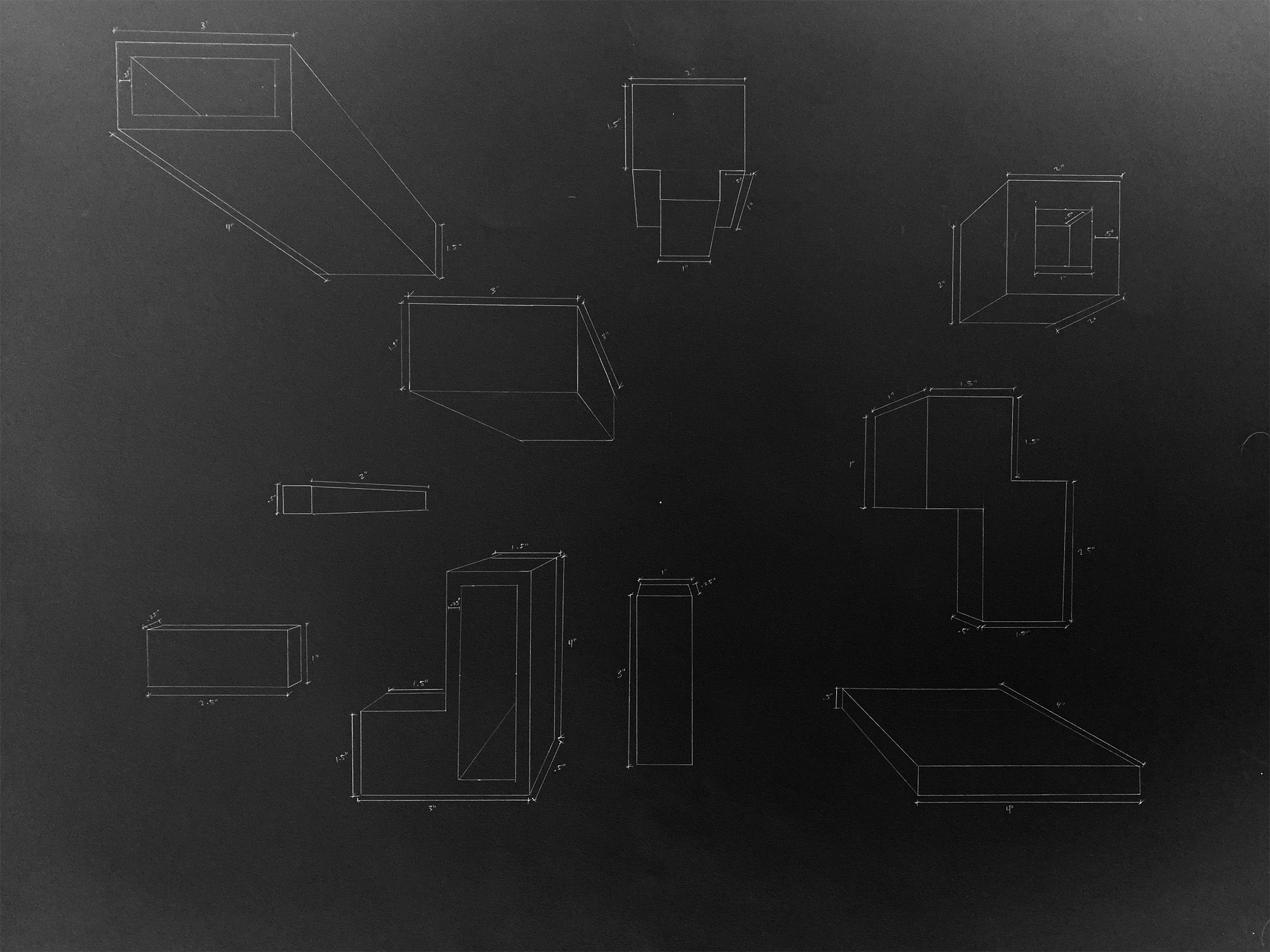
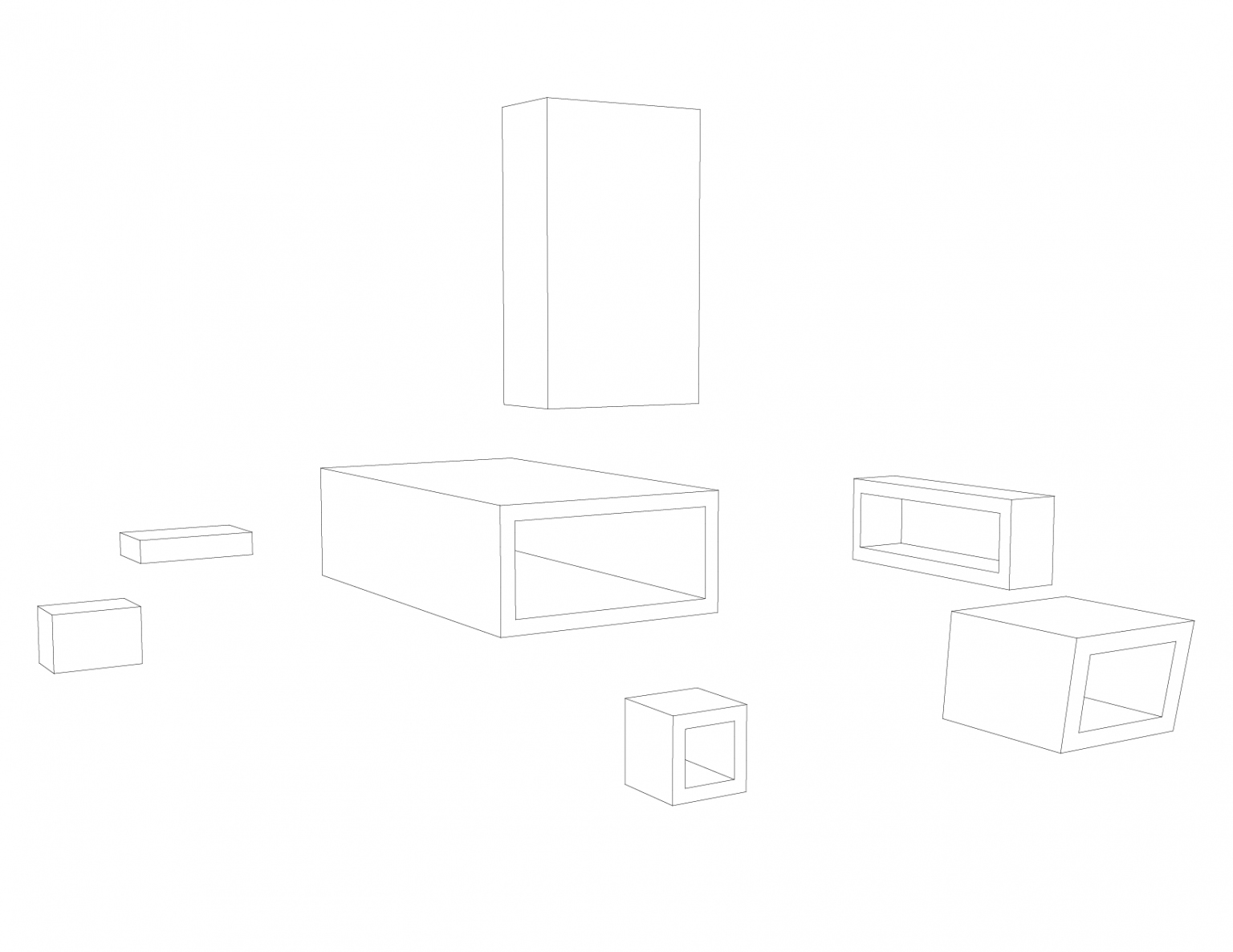
Next we created assemblages by aggregating the forms. All the forms brought into Rhino had to be used in the assemblage. A lot of trial, error and modification occurred for me here. Going back to analog we were asked to draw our assemblages from different vantage points using light and shadow. At this point we were told to start thinking about what narrative, purpose, or concept our assemblage could address.
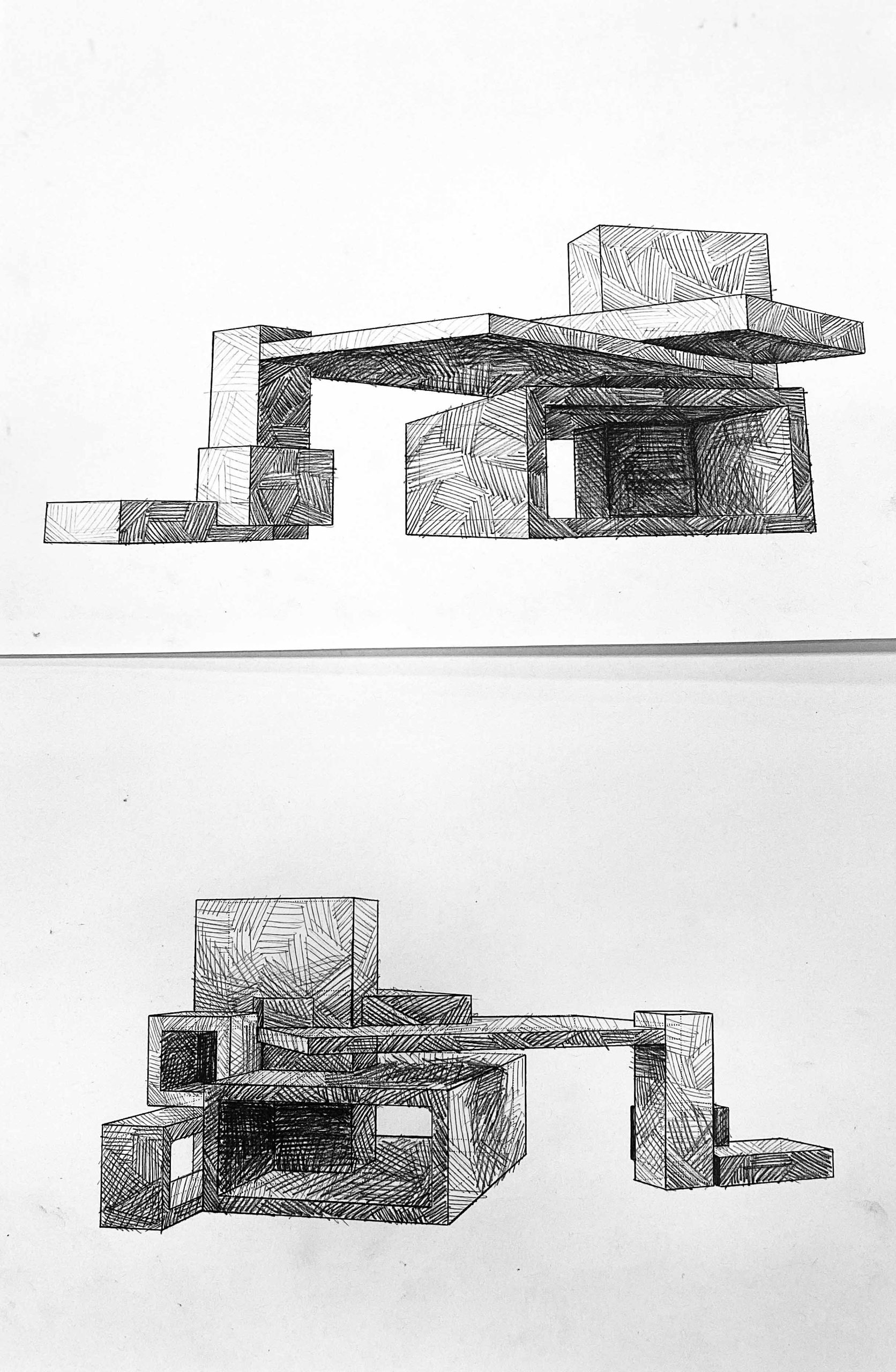
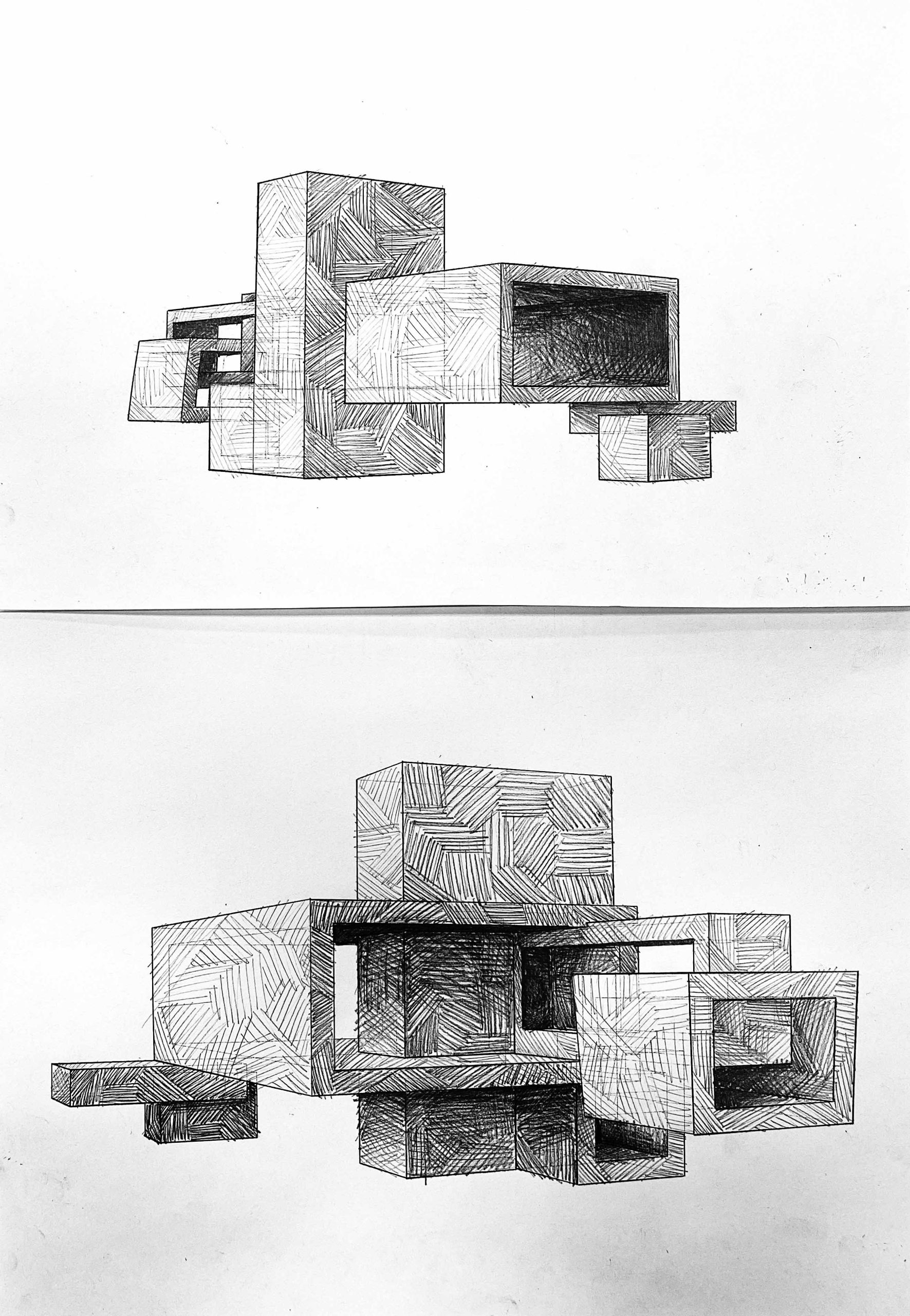

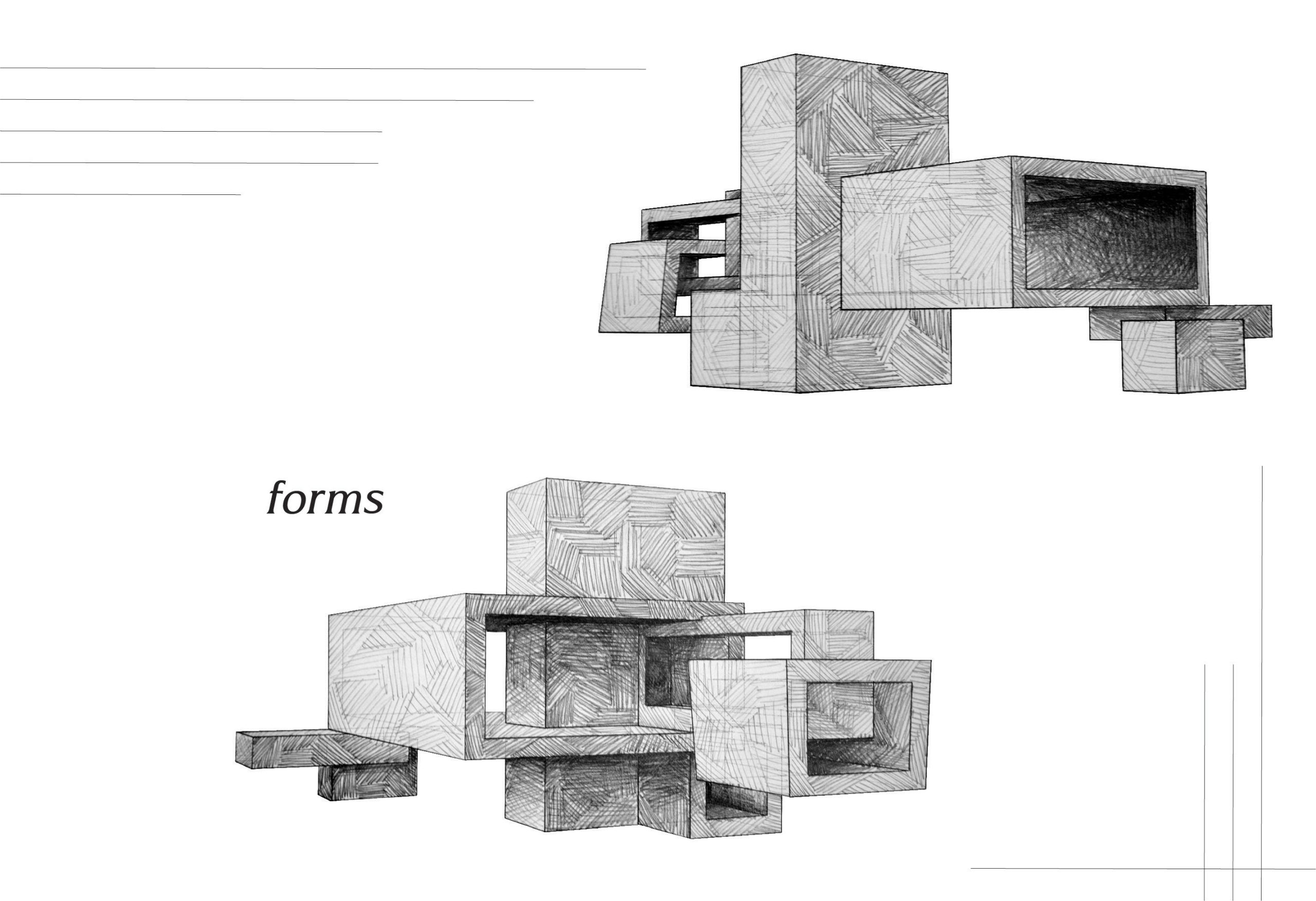
We then made a series of isometric and exploded axon renderings of our assemblages to objectively understand the relative scales of our forms and how they aggregate together.
With this understanding, we laser cut pieces of chipboard and built a model of our assemblage. We placed figures of varying sizes into our models to look at scale and how people could interact with the space.
